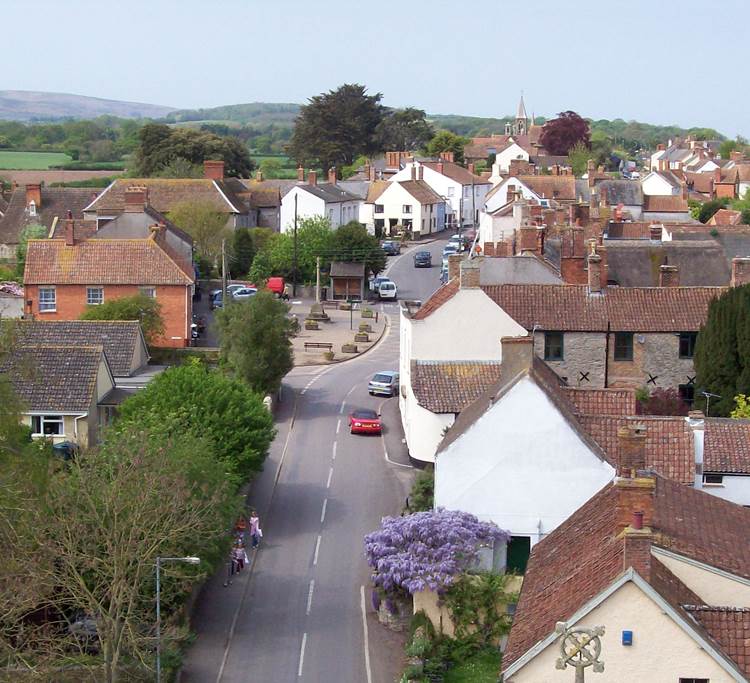- Home Page
- Somerset Profile
- Electoral Division Profiles
- Local Community Networks
- Joint Strategic Needs Assessment
- Census 2021
- Census 2011
- People & Neighbourhoods
- Health and Wellbeing
- Crime & Community Safety
- Economy & Jobs
- Education, Skills and Learning
- Environment
- Housing
- Travel and Access
- SINePost
- Children & Young People
- Older People
- Somerset Maps
- Somerset Geographies
- County Council Election Results
- Contact us
SINePost newsletter - May 2015
 In this issue ...
In this issue ...
- Tourism statistics
- Built-Up Area data profiles
- Jobs Density
- Highest Level of Qualification statistics
- Welfare Reform study
- Children and Young People Public Health profiles
- Smoking in Pregnancy statistics
- Recorded Crime trends
- Suicide Prevention Profile
- What’s New on the Somerset Intelligence website?
- Forthcoming Statistical Releases
1. Tourism statistics
 Somerset attracts an annual 11.4million day visitors and 1.8million overnight visitors from within Great Britain, according to estimates from the Office for National Statistics (ONS). Day visitors spend an average of £34 per visit and overnight visitors £166, resulting in total annual visitor expenditure of £686million. The figures are 3-year averages based on the years 2011-2013.
Somerset attracts an annual 11.4million day visitors and 1.8million overnight visitors from within Great Britain, according to estimates from the Office for National Statistics (ONS). Day visitors spend an average of £34 per visit and overnight visitors £166, resulting in total annual visitor expenditure of £686million. The figures are 3-year averages based on the years 2011-2013.
Sedgemoor attracts the highest number of domestic overnight visitors (449,000 annually), followed by West Somerset (421,000), although overall visitor expenditure is highest in West Somerset.
The figures indicate that day trips in Somerset tend to be longer in duration than in most other local authority areas: 35% of day trips in the county last at least six hours, which is surpassed only by four local authorities nationally, including Blackpool and Brighton.
For the full dataset, plus an interactive ‘Tourism Atlas for England and Wales’, see: www.ons.gov.uk/ons/rel/tourism/sub-national-tourism/a-tourism-atlas-for-england-and-wales--2015/index.html
2. Built-Up Area data profiles
 Profiles for 170 towns and villages in Somerset, based on the results of the 2011 Census, have been added to the Census Profile tool on the Somerset Intelligence website.
Profiles for 170 towns and villages in Somerset, based on the results of the 2011 Census, have been added to the Census Profile tool on the Somerset Intelligence website.
The new profiles are based on the Census definition of a contiguous ‘Built-Up Area’ (BUA). They cover population demographics, ethnicity, health & care, economic activity, housing, and household composition. Individual towns and villages can be selected from a drop-down list.
3. Jobs Density
 New jobs density estimates for 2013 have been released by the Office for National Statistics (ONS). Jobs density is defined as the number of jobs in an area divided by the resident population aged 16-64 in that area. For example, a job density of 1.0 means that there is one job for every resident aged 16-64. See: www.nomisweb.co.uk/articles/886.aspx
New jobs density estimates for 2013 have been released by the Office for National Statistics (ONS). Jobs density is defined as the number of jobs in an area divided by the resident population aged 16-64 in that area. For example, a job density of 1.0 means that there is one job for every resident aged 16-64. See: www.nomisweb.co.uk/articles/886.aspx
In 2013, West Somerset district had the highest jobs density in Somerset (0.97) and Sedgemoor the lowest (0.69). The figure for Sedgemoor is one of the lowest in the South West region. Figures for all Somerset districts improved on the preceding year.
Only Exeter, West Dorset and Cotswold in the South West have a jobs density of 1.0 or greater.
4. Highest Level of Qualification statistics
 The proportion of Somerset residents educated to NVQ Level 4 (degree or equivalent qualification) continues to increase but remains below national averages according to the latest ONS Annual Population Survey. In 2014, an estimated 33% of Somerset residents were educated to NVQ4 or above, compared to 36% nationally. Conversely, the proportion of Somerset residents educated to NVQ2 or above exceeds the national average (77% and 73% respectively). See: http://www.nomisweb.co.uk/articles/885.aspx
The proportion of Somerset residents educated to NVQ Level 4 (degree or equivalent qualification) continues to increase but remains below national averages according to the latest ONS Annual Population Survey. In 2014, an estimated 33% of Somerset residents were educated to NVQ4 or above, compared to 36% nationally. Conversely, the proportion of Somerset residents educated to NVQ2 or above exceeds the national average (77% and 73% respectively). See: http://www.nomisweb.co.uk/articles/885.aspx
Previous analysis from the 2011 census revealed that it is younger adults in Somerset who are less likely to hold a Level 4 qualification: 31% of Somerset residents aged 25-34 were qualified to Level 4 compared to 40% nationally. This is consistent with an outflow of Somerset young people from the county to university towns and cities.
At ages 45 and over, Somerset has a higher proportion of residents with a Level 4 qualification than is seen nationally, which may be linked to ‘qualified’ older people migrating to the county in later life.
 5. Welfare Reform study
5. Welfare Reform study
The South West Housing Associations Influence and Leadership Organisation (SW HAILO) has published the second part of a report into the impact of welfare benefit reforms on the work status and day-to-day lives of social housing tenants. An initial report focussed on interviews with 200 social housing tenants in the spring of 2013, while this new report repeats the process one year on. Findings include:
- Between 2013 and 2014, one in six tenants either found work or increased their working hours.
- 74% of economically inactive tenants actively contribute to their community and society in other ways.
- There are real barriers to tenants accessing work, training and advice, especially in rural areas, semi-rural towns and villages.
The full report is available at: http://sticerd.lse.ac.uk/dps/case/cr/casereport90.pdf
6. Children and Young People Public Health Profiles
 The Public Health team at Somerset County Council, in collaboration with the getset service, have published health and wellbeing profiles for each Somerset district. The profiles include information on under 18s conceptions, breastfeeding prevalence, obesity, hospital admissions due to injury, and mortality. See: www.somersetintelligence.org.uk/public-health-cyp-needs-profiles/
The Public Health team at Somerset County Council, in collaboration with the getset service, have published health and wellbeing profiles for each Somerset district. The profiles include information on under 18s conceptions, breastfeeding prevalence, obesity, hospital admissions due to injury, and mortality. See: www.somersetintelligence.org.uk/public-health-cyp-needs-profiles/
The profiles reveal that, compared to the Somerset average:
- Mendip is significantly better in terms of rates of child hospital admissions due to accidents.
- Sedgemoor is significantly better in terms of infant/childhood mortality and in terms of hospital admissions due to accidents. The district is significantly worse than the county average in terms of breastfeeding prevalence (at 6-8 week check).
- South Somerset is significantly worse in terms of hospital admissions due to accidents.
- Taunton Deane is significantly better in terms of breastfeeding prevalence (at 6-8 week check).
7. Smoking in Pregnancy
 Somerset currently has its lowest ever recorded rates of smoking in pregnancy according to latest figures. Between April and December 2014, 14.4% of women were known to have been smokers at the time of delivery. For the latest reporting period (Oct-Dec 2014) the figure was 13.2%. For the full national dataset, see: www.hscic.gov.uk/article/2021/Website-Search?productid=17409
Somerset currently has its lowest ever recorded rates of smoking in pregnancy according to latest figures. Between April and December 2014, 14.4% of women were known to have been smokers at the time of delivery. For the latest reporting period (Oct-Dec 2014) the figure was 13.2%. For the full national dataset, see: www.hscic.gov.uk/article/2021/Website-Search?productid=17409
Meanwhile, a total of 3,272 people in Somerset set a quit date through the NHS Stop Smoking Service between April and December 2014. At the four week follow-up 1,426 (44%) had successfully quit (as self-reported). Highest success rates were in retired people and those in managerial or professional occupations. Lowest success rates were in students and people who were long-term unemployed (or who had never worked). See: http://www.hscic.gov.uk/catalogue/PUB17302
 8. Recorded Crime trends
8. Recorded Crime trends
Overall crime levels in Somerset were broadly unchanged in 2014 compared to the previous year, according to figures from the Office for National Statistics. There were 25,543 offences recorded in Somerset in the year to December 2014, compared to 25,480 in 2013.
There were notable decreases in the number of recorded drug offences (down 29%) and public order offences (down 14%). Conversely, increases were seen in violent offences (up 19%) and sexual offences (up 10%). The latter is thought to reflect a greater willingness of victims to come forward to report such crimes.
See: www.ons.gov.uk/ons/rel/crime-stats/crime-statistics/year-ending-december-2014/index.html
9. Suicide Prevention Profile
Public Health England (PHE) has collated a range of data at local authority level on suicide, including prevalence, risk factors, and service contact amongst those at risk: http://fingertips.phe.org.uk/profile-group/mental-health/profile/suicide
There were 386 suicides recorded in Somerset between 2006 and 2013, an average of almost fifty a year. The suicide and undetermined death rate for Somerset for the period 2011-13 was 9.8 per 100,000, slightly but not significantly above the national average (8.8) and in line with the South West figure (10.1). In Somerset, as nationally, around three in four deaths were male.
For further details on Suicide and self-harm see the Somerset Intelligence website: http://www.somersetintelligence.org.uk/suicide-self-harm.html
10. What’s New on the Somerset Intelligence website?
.pdf%20-%20Adobe%20Reader_2013-03-28_11-48-53.png) The following content has been updated in the last month:
The following content has been updated in the last month:
- Safeguarding and Child Protection: www.somersetintelligence.org.uk/safeguarding-and-child-protection.html
- School Attainment (including vulnerable learners): www.somersetintelligence.org.uk/attainment.html
- Children Looked After: www.somersetintelligence.org.uk/children-looked-after.html
The following small area data has been added to the INFORM Somerset data hub:
- School Attainment and Pupil Characteristics 2014: http://informsomerset.org.uk/dataviews/view?viewId=6
11. Forthcoming Statistical Releases
The following are due for release at sub-regional geographies during May:
- Fuel Poverty sub-regional report 2013 (DECC)
- Local Health Profiles: May 2015 data update (PHE)
- Local tobacco control profiles for England: May 2015 data update (PHE)
- Benefit cap: number of households capped to February 2015 (DWP)
- Internet Users in the UK: 2015 (ONS)
- 2011 Census analysis: economic expectancies for English upper tier local authorities (ONS)
And finally ...
- If you have any news or articles you’d like to share
- If any of the links in this newsletter don’t work
- If you would like to unsubscribe from the SINePost email alert
Please email TXAtkins@somerset.gov.uk
 Read our SINePost monthly newsletter
Read our SINePost monthly newsletter
Did you know?
You can see Ofsted ratings for all Somerset schools on our Ofsted dashboard.
